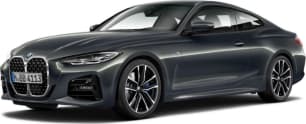One of the biggest changes from 650 to 720 is the new Monocage II carbon fibre tub. The drop in overall weight is partly because the cage now includes the windscreen hoop, which previously was metal. Kerb weight with all fluids and a 90 percent full fuel tank (don't ask why 90 percent, I don't know either) it weighs 1419kg, giving it the same power-to-weight ratio as a Bugatti Veyron. Yikes.
The 720S is an astonishing car. We always say you can pootle in a modern supercar, but the 720S is so user-friendly, maneouvreable and so easy to see out of - there are no significant blind spots with an almost entirely glass roof - you can tackle city and country in comfort mode and actually be comfortable. Comparatively, a Huracan goes all blergh in Strada mode and the 488 GTB never stops begging you to kick it in the guts. The McLaren is easy, liveable and smooth.
I was driving a left-hand drive car in the UK, which should have been a complete nightmare, but it was fine - the vision is excellent, particularly over the shoulder.
But when you do decide to kick the 720S into action, it's wild. The acceleration is brutal, the handling impeccable and the ride, oh, the ride. No supercar can handle bumps, irregularities and flat out poor surfaces like the McLaren. The 540C's ride is incredible as it is, but the 720 is just wow.
Because it's quite light, the nose goes where you point it, the huge brakes have less to stop, the towering power less to push. The steering in the 720S is well-weighted but has tons of feel - you know what's going on underneath the double-wishbone sprung front wheels and you can adjust what you're up to accordingly. The stability system is excellent, too. Never overbearing or abrupt, where talent ends and the help begins is delightfully blurry.
The new engine is a bit more tuneful than past McLarens - there's even a loud-start party trick - but it's not loud and overbearing. You'll hear turbos whisting, sighing and pshawing, a deep bassy exhaust note and some awesome intake roar. But there's not much off-throttle character. It does at least do away with the histrionics of the Italians.
The only serious drama is the amount of noise bouncing around the cabin over about 100km/h. There's a lot more glass than sound-soaking Alcantara, which explains some of the extra tyre racket over a 650S. You can't have everything, I guess.

